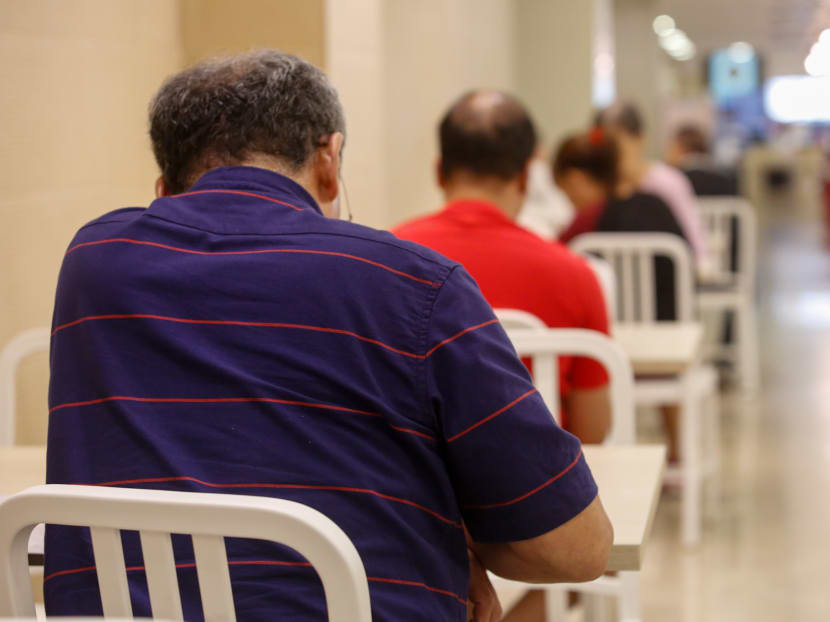Public policy planners have to do more to look into needs of rising number of ageing singles, analysts say
SINGAPORE — In order to cater to the needs of the growing number of singles who may be ageing alone in their homes in the near future, policymakers would have to increasingly look at Singapore's infrastructure and social programmes.

In the latest census released by the Department of Statistics, data showed that the proportion of singles in Singapore was increasing across all age groups.
- Policymakers need to look at ways to provide for a higher number of ageing singles in Singapore, analysts said
- This could include increasing communal spaces at public housing estates and enlisting the community to support them
- The role of the community would be more important as reliance on family shrinks with fewer children born
- They also said the continued declining numbers of marriages and children are difficult to mitigate
SINGAPORE — In order to cater to the needs of the growing number of singles who may be ageing alone in their homes in the near future, policymakers would have to increasingly look at Singapore's infrastructure and social programmes.
Whether it be increasing communal spaces at public housing estates, or relying more on the community rather than the family to care for them, experts said that more institutional planning would need to be considered.
Sociology professor Paulin Straughan from the Singapore Management University (SMU) said: “I think one important consideration for policymakers is how well we are prepared to receive an ageing population with a large number of singles who are ageing alone in their own homes, and older couples who live in a family nuclei with no younger adult members.”
In the latest census released by the Department of Statistics on Wednesday (June 17), data showed that the proportion of singles was increasing across all age groups.
Women have been giving birth to fewer babies and Singapore’s population grew 1.1 per cent yearly between 2010 and 2020, its slowest growth rate over a decade since 1970, when the Government collected data for its first post-independence census.
With the expected rise in the number of singles and therefore an increase in the number of small or one-person households, another analyst also said that infrastructural changes such as smaller government-built flats could be one consideration.
Dr Ko Pei-Chun, a lecturer who has done family and demographic research at the Singapore University of Social Sciences, added that expanding communal spaces would help to counter social isolation in old age, which is often associated with mental health issues and general health decline.
“Such built-in environment can encourage more social interactions among the neighbours, who may be more likely to live alone in the future,” Dr Ko said.
Both Dr Ko and Prof Straughan also said that the role of the community would be increasingly important as family sizes continue to shrink with the decline in the number of children born.
This means that the role of community centres, community-based voluntary welfare organisations and grassroot initiatives will become more important in sustaining organic interactions between single and ageing residents, Dr Ko said.
She added that more social gerontologists — who study the social aspects of growing old and its effects — are emphasising the need for a community-based approach to allow residents to age in place, and it is a trend in many developed and ageing societies.
Singapore can no longer rely on the nucleus family of single, ageing residents for the provision of eldercare, particularly for those who have any form of disabilities.
Prof Straughan said: “I believe we have to move to continue to improve our infrastructure to support ageing in place, and to step up on encouraging volunteers... to build a strong social support network that supports community self-help.”
Dr Mathew Mathews, a senior research fellow at the Institute of Policy Studies — a think-tank under the National University of Singapore (NUS), noted that there have been changes in housing policies to make it easier for singles to pursue homeownership.
“We certainly have to recognise that singles are a growing group in our society and their needs have to be accommodated even while there are measures to help people to consider marriage and child-rearing,” he said.
When asked earlier at a press briefing on the census about whether the Government would consider giving singles greater access to public housing, Ms Indranee Rajah, Minister at the Prime Minister’s Office, said that they review housing policies from time to time.
The analysts interviewed by TODAY said that the slow population growth and the continued declining numbers of marriages and children are difficult to mitigate given that there are many other social forces at work such as career aspirations, which run counter to the time and commitment needed for child-rearing.
They believe that without government intervention all these years to encourage marriage and parenthood, such as the provision of cash incentives for giving birth as well as priority access to public housing, the numbers would be even lower.
“I don’t think we can realistically do much better than we have now,” Prof Straughan said.
Dr Mathews said polls have also shown that the majority of Singaporeans are not supportive of single parenting as a norm since caregiving and financial responsibilities could be shared when there are two parents.
“Quite a segment of society here would expect that the bulk of the costs related to child-raising be borne by parents and not by the state — though this is certainly a matter for debate given our low total fertility rate,” he added.
Sociology professor Tan Ern Ser from the National University of Singapore said that the country should encourage child adoption as one option to increase birth rates.
“Give all born and yet-to-be-born babies the same privileges regardless of family types — traditional or non-traditional — and encourage calibrated immigration,” he said.











